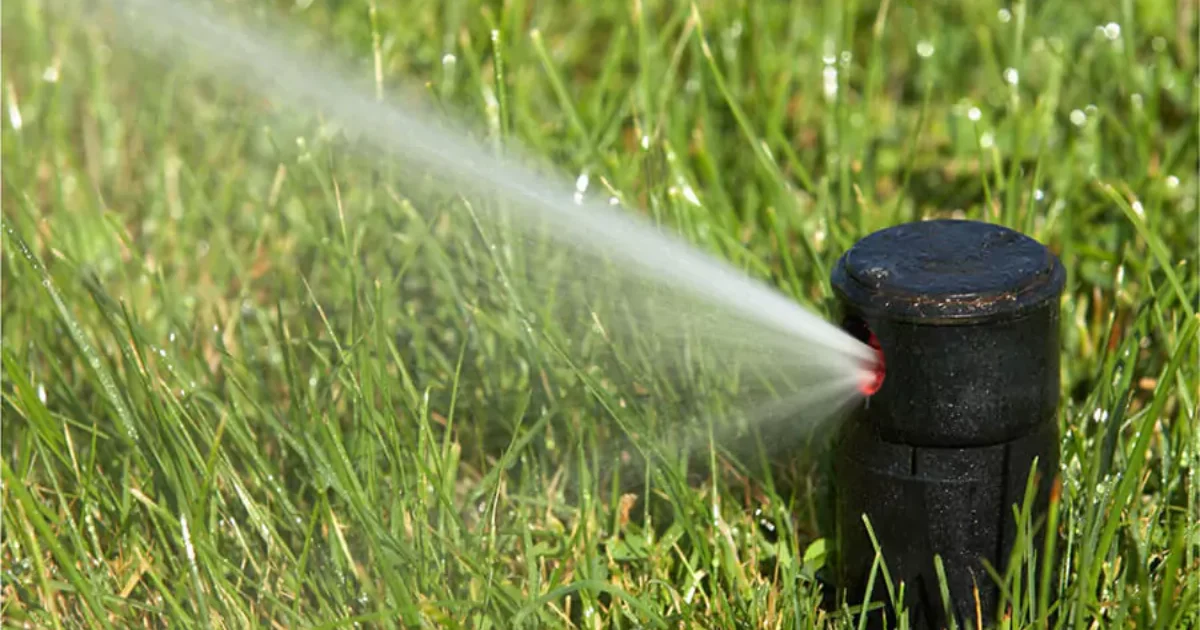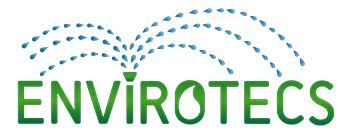
Installing an irrigation system is a precise process that includes trenching, pipe layout, zoning, and controller setup. If you’re planning a new system, timing matters just as much as quality. Delays cost time, money, and often leave your lawn half-finished. That’s why it’s important to understand how long does it take to install irrigation system before you start.
For most residential properties, the installation takes about 1 full day for 9 zones or less. Larger or more complex systems may take several days, depending on yard size and layout.
At Wise Water Works, we keep things simple and efficient. You get licensed professionals, reliable timelines, and systems built to last in Texas soil. We’ve installed irrigation correctly for over 30 years, and we do it with precision, not guesswork.
What is the Average Time to Install an Irrigation System
The average time to install a residential irrigation system is between 3.5 to 4.5 working days. This timeline applies to standard systems with 8 to 12 zones.
It includes trenching, pipe laying, system connection, and full testing. You can expect to complete the smaller system within a single day. But it often reaches the upper end of that range for the larger or multi-zone setups. Commercial systems typically require more time.
The timeline starts after the final design is approved and materials are ready. This duration covers only the physical installation process, not the planning or proposal stage. Expect installation to run consecutively without unnecessary delays.
5 Major Factors Influencing Irrigation System Installation Time

Some installations move fast. Others take days longer than expected. Here’s what really affects the timeline and why it matters to you.
1. Size and Complexity of the System
More zones mean more trenching, valves, and heads. An 8-zone system may take 3.5 days. A 14-zone layout could stretch to 6 days. Complex designs with flowerbeds, slopes, or microzones require extra planning and precision work.
2. Existing Landscape
New construction lots move quicker, while established lawns slow things down. Crews must protect roots, avoid mature plants, and hand-dig near hardships. If your yard is already finished and landscaped, you can expect an extra 1–2 days for this.
3. Soil Type and Terrain
Soft, loamy soil digs fast. Clay or rocky soil takes longer to trench. Sloped terrain also adds time. Rocky ground may require jackhammering or special trenchers. That alone can double digging time on certain lots.
4. Water Source Availability
City water hookups are straightforward. Well systems or pump setups take longer. You’ll need pressure testing and backflow preventer installation. Expect more trenching and added hours if your main line is far from the yard.
5. DIY Vs. Professional Installation
If you’re thinking of doing it yourself, consider the time commitment first. A professional crew will install your system in 3.5 to 4.5 days. They show up with everything needed tools, parts, a set plan and work straight through without guesswork.
Now compare that to a DIY route. You’ll likely spend 7 to 14 days or more, especially if you’re working weekends or after hours. You’ll dig by hand, stop for trips to the store, and troubleshoot as you go. Even small mistakes eat up time fast.
How to Prepare Your Property for Irrigation Installation?
A smooth installation starts with proper preparation. Take these steps before your scheduled install to avoid delays and reduce mess.
1. Schedule Utility Marking
Call 811 at least 2–3 business days before installation. This service marks all public utility lines like gas, electric, and cable. But it doesn’t cover private lines. If you have underground dog fences, lighting wires, or pool equipment, locate those yourself or contact the original installers.
2. Clear Lawn & Work Areas
Remove anything that might block the crew. That includes patio furniture, toys, tools, potted plants, and decorations. If you have sprinklers being replaced, mark them or let the crew know. Secure pets inside. Unlock backyard gates. A clear yard reduces setup time.
3. Communicate Any Known Underground Features
Make a list of anything buried in your yard like old sprinkler lines, septic systems, drain pipes, wiring, or past irrigation attempts. Mark their locations if possible. Installation crews don’t guess what’s below.
4. Coordinate Water Access & Shut-Off Time
Your water supply will need to be shut off during installation. Choose a time when this won’t interfere with daily use. Most shut-offs last 30 to 60 minutes. If your water connection is inside a garage or utility room, unlock those areas beforehand. Easy access prevents delays.
5. Keep Driveways & Access Points Clear
Clear space for vehicles and equipment. Leave the driveway open, especially near access points to the yard. Remove any cars, trailers, or bins blocking gate entrances. If your timer or backflow preventer is in a tight spot, make sure the path to it is open.
What Is The Best Time Of The Years To Install Irrigation System
Fall is the most efficient and practical time to install an irrigation system. The conditions are optimal for trenching, system setup, and long-term performance. You also avoid seasonal delays and enter spring fully prepared. It is ideal because:
- Stable Soil Conditions: Fall soil offers the right balance, neither too dry nor oversaturated. This allows trenching and pipe placement to proceed without structural issues or delays.
- Cooler Working Temperatures: Cooler weather reduces strain on equipment and installation crews. The process moves efficiently without the interruptions often caused by summer heat.
- Improved Scheduling Availability: Demand typically decreases after peak summer months. You are more likely to secure a preferred installation date with shorter lead times.
- Lower Risk of Lawn Damage: Turf growth slows in fall. Installation leaves minimal visible impact, and the lawn recovers naturally before the growing season begins
You can go with spring, but plan early. Contractors get booked fast, and delays are common. Summer makes trenching harder. The soil is dry, and heat slows everything down. Winter is rarely ideal. Frozen ground stalls work, and PVC costs often spike.
Common Delays During Irrigation Installation [Tips to Prevent]
Irrigation installation is a detailed process, and delays can disrupt schedules and increase costs. By recognizing the most frequent causes of setbacks, you can take action to minimize interruptions and keep your project running efficiently.
1. Bad Weather
Unfavorable weather conditions directly affect trenching, pipe laying, and electrical work. Wet or frozen ground becomes unsafe and unworkable, while excessive heat can shorten work hours. Scheduling during moderate seasons helps avoid extended downtime.
2. Permit or Inspection Delays
Most jurisdictions require permits for water taps, backflow devices, or electrical controllers. Delays often occur when documents are incomplete or inspection dates are pushed back. Submitting applications early and verifying regulatory requirements.
3. Incorrect or Missing Utility Markings
Unmarked or inaccurately marked utilities lead to serious safety risks and legal liabilities. Utility lines must be clearly identified at least three days prior to excavation.
4. Supply Chain Issues
Material shortages especially for valves, pipes, or control units can halt installation without warning. Working with suppliers who maintain inventory levels and ordering critical components in advance keeps progress uninterrupted.
5. Hard or Rocky Soil Conditions
Difficult soil types increase trenching time and wear on equipment. Conducting a soil evaluation in advance helps the installer to bring the right tools, such as rock trenchers or compact excavators, to handle challenging terrain.
6. Scheduling Conflicts or Limited Crew Availability
Irrigation contractors often face high demand during peak seasons. Delays arise when crews are stretched thin or jobs overlap. Booking the project well in advance and confirming crew commitment supports a steady timeline.
7. Inexperienced or Disorganized Installer
Unprepared contractors cause delays through incorrect zoning, poor planning, or lack of equipment. Hiring a licensed, experienced professional with a clear work plan, project scope, and references ensures efficiency and accountability.
Wise Water Works: Your Next Smart Step in Irrigation
Wise Water Works is your best next move if you’re looking for a fast, precise, and professionally installed irrigation system. With over 30 years of hands-on experience, we build efficient systems that match your property, water source, and layout without cutting corners.
Our team works with clear timelines, clean job sites, and no guesswork. We use proven materials, licensed installers, and modern controllers that maximize performance and minimize waste.
Whether you’re managing a new build or upgrading an older system, we get the job done right, on time, every time. Don’t wait weeks for a basic install. With Wise Water Works, you get smart irrigation with real results, backed by expert planning and quality workmanship.
In Closing
Installing an irrigation system requires careful planning, the right tools, and experienced hands. Depending on your property’s size, soil, and layout, installation takes 3.5 to 4.5 working days for most homes.
Timing your project wisely, especially in fall and preparing your site ahead of time can prevent delays and reduce costs. Whether you’re considering a small system or a full-yard setup, knowing the timeline helps you plan with confidence.
If you’re ready for a professional, efficient installation, Wise Water Works is here to guide your next step.
Frequently Asked Question
Question: How long does a typical residential system take to install?
Answer: A standard residential irrigation system typically takes 3.5 to 4.5 business days to complete. This includes trenching, pipe installation, water connection, and full system testing.
Question: Can I install an irrigation system myself?
Answer: You can, but it requires advanced planning, trenching equipment, and plumbing knowledge. Most homeowners choose professional installation to avoid delays, mistakes, and costly rework.
Question: Do I need a permit for irrigation in Texas?
Answer: Yes. Texas requires a licensed irrigator to handle system design and installation. Permits are mandatory and must meet local plumbing and backflow prevention codes.
Question: How soon can I use my sprinkler system after installation?
Answer: Your system is ready for immediate use once installation and testing are complete. Before the final handoff, controllers are programmed, zones verified, and coverage checked.
